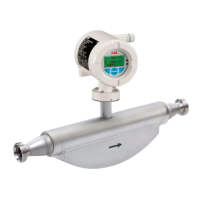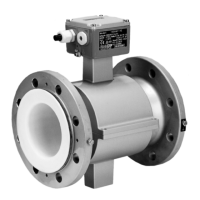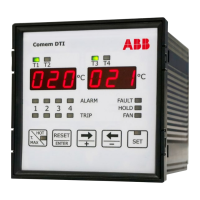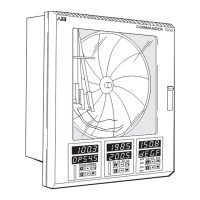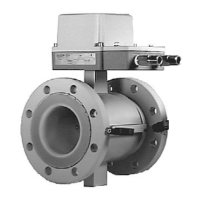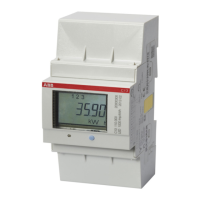CoriolisMaster FCB400, FCH400 CORIOLIS MASS FLOWMETER | OI/FCB400/FCH400-EN REV. E 25
3 Design and function
General
The ABB CoriolisMaster operates according to the Coriolis
principle.
The construction features conventional parallel meter tubes and
is characterized in particular by its space-saving, sturdy design,
wide range of nominal diameters and minimal pressure loss.
Measuring principle
If mass flows through a vibrating pipe, Coriolis forces are
generated which bend or twist the pipe. These very small
measurement pipe deformations are picked up by optimally
mounted sensors and electronically evaluated. Because the
measured phase shift of the sensor signals is proportional to the
mass flow, the mass conveyed by the measuring device can be
recorded directly using the Coriolis mass flowmeter. The
metering principle is independent of the density, temperature,
viscosity, pressure and conductivity of the fluid.
The meter tubes always vibrate at resonance. This arising
resonant frequency is a function of the meter tube geometry, the
characteristics of the materials and the mass of the medium in
the resonating meter tube. It provides an accurate measure of
the density of the measuring medium.
An integrated temperature sensor records the measuring
medium temperature and is utilized for corrections to
temperature-dependent device parameters. In summary, it is
possible to simultaneously measure mass flow, density and
temperature with the Coriolis Mass Flowmeter. Other
measurement values can be derived from these values, e.g.
volume flow rate or concentration.
Function for calculating Coriolis force
vmcF
2
cF
Coriolis force
Angular velocity
v
Velocity of the mass
m Mass
A Movement of the pipes inward, no flow
B Direction of the Coriolis force with flow and movement of the pipes
outward
C Movement of the pipes outward, no flow
D Direction of the Coriolis force with flow and movement of the pipes
inward
Figure 3: Simplified representation of Coriolis forces
Change from two to one column
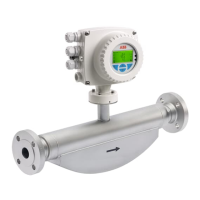
